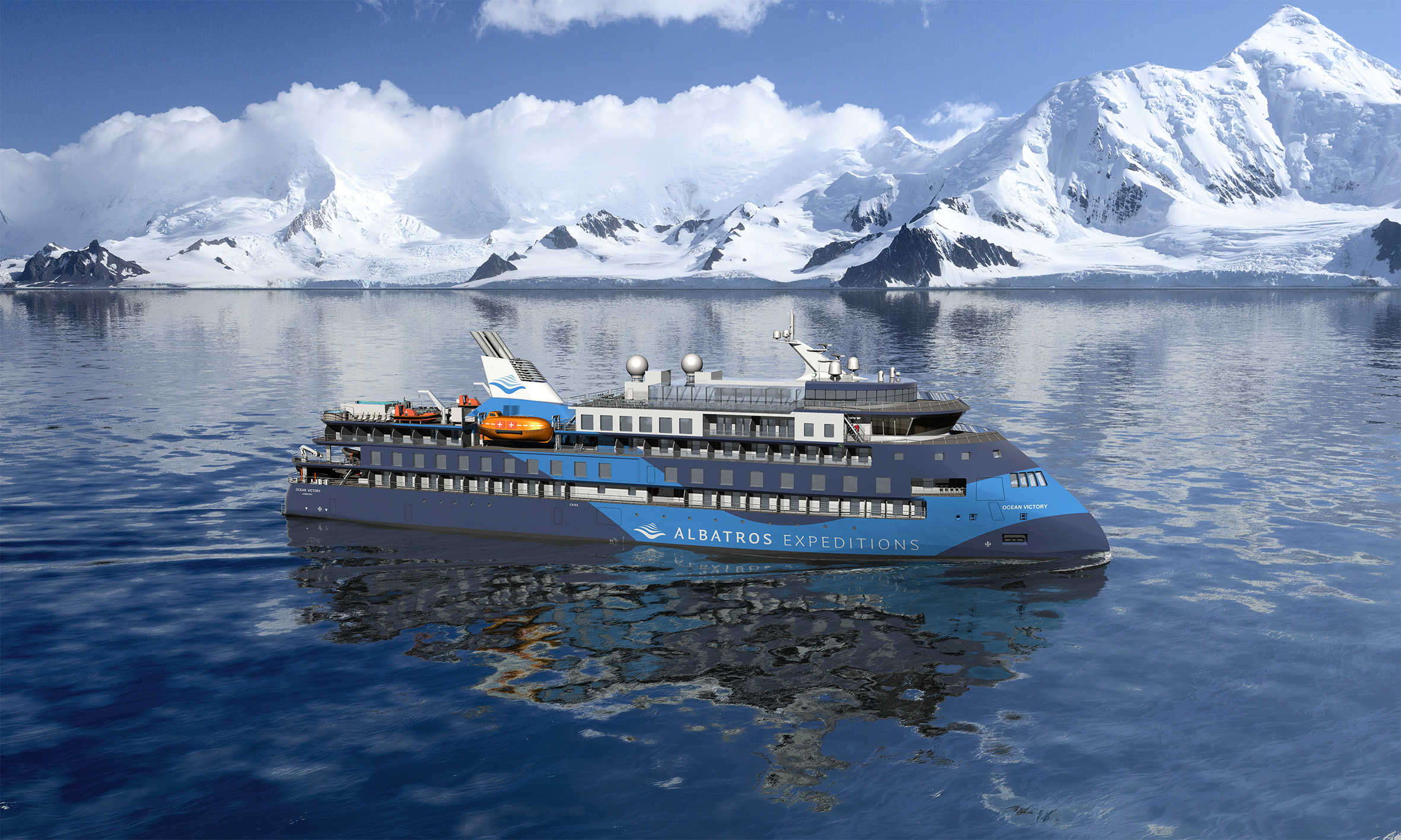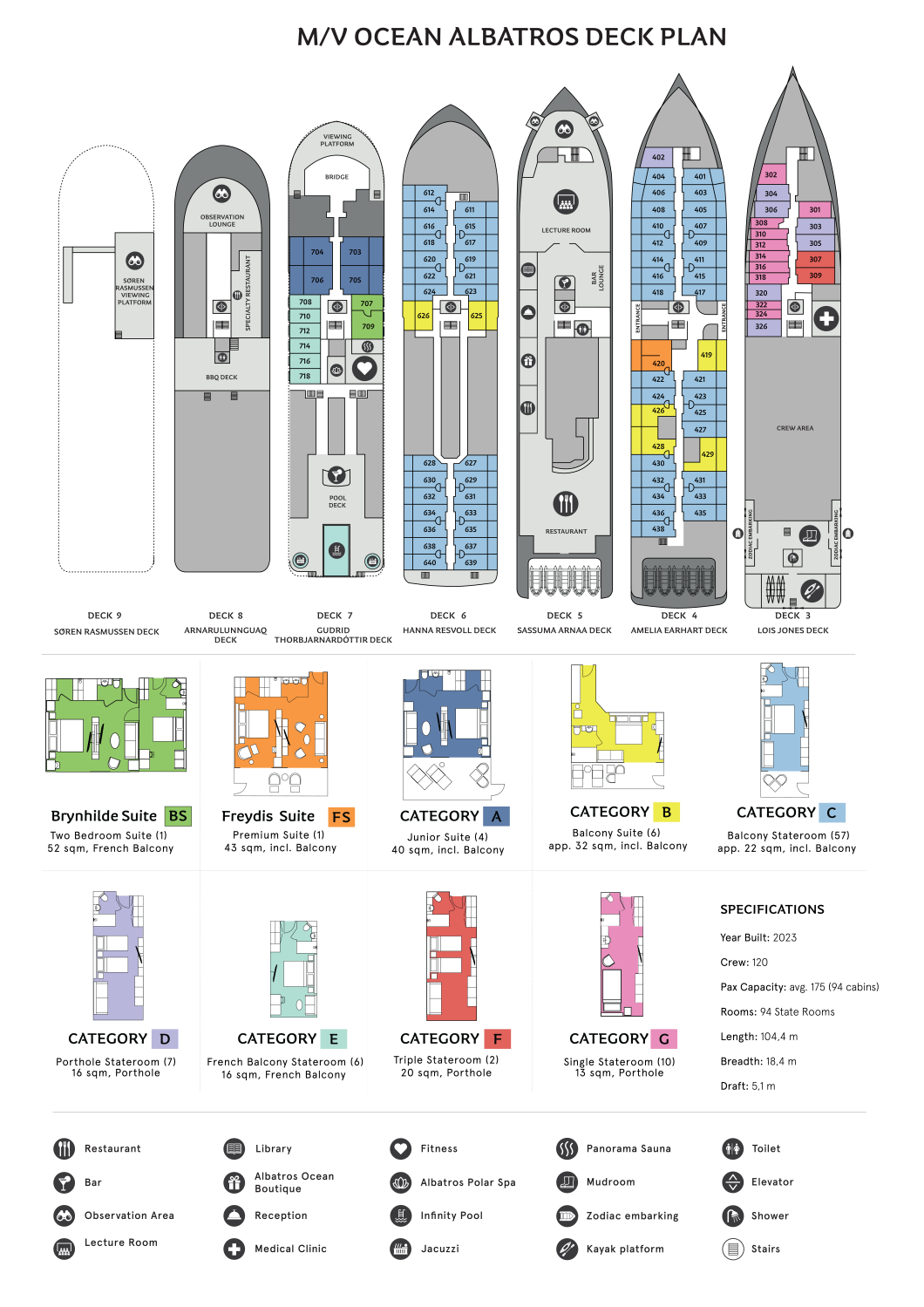Through the North Atlantic: Ocean Albatros
Iceland, Faeroes, UK
There are few wilder, more magnificent and untouched places than the islands of the North Atlantic! And no ships more suited than Ocean Albatros for such a voyage. On this adventure, we cover wondrous islands in Scotland, the Faeroe Islands, and Iceland. Cruising from Scotland to the lush green islands of Orkney, Shetland, The Faroes, and Iceland, this 9-day spring adventure rewards us with fair-lighted days and matchless landscapes and seascapes. Migrating birds, dolphins, and whales are only some of the sights we expect in this cruise
- Orkney Islands and Historic Kirkwall
- Shetland Islands. The Harbour And Fishing Village Of Lerwick
- Faroe Islands. Torshavn And The North Atlantic
- Faroe Islands, Klaksvik
- Zodiac Landing at Djúpivogur
- Westman Islands, Surtsey, and UNESCO Natural Heritage Sites, and City Walk In Heimaey
Last-Minute Rates
Stewart's Take
The chance to visit isolated, beautiful and fascinating outposts.
Overview
There are few wilder, more magnificent and untouched places than the islands of the North Atlantic! And no ships more suited than Ocean Albatros for such a voyage. On this adventure, we cover wondrous islands in Scotland, the Faeroe Islands, and Iceland.Cruising from Scotland to the lush green islands of Orkney, Shetland, The Faroes, and Iceland, this 9-day spring adventure rewards us with fair-lighted days and matchless landscapes and seascapes. Migrating birds, dolphins, and whales are only some of the sights we expect in this cruise.
M/V OCEAN ALBATROS

The brand-new luxury infinity vessel Ocean Albatros is one of the most modern small ship vessels in the world. This stylish cruise ship is ideally suited to small-ship expeditions, with a total of 93 comfortable cabins for guests, all with a view of the ocean, 90% with a balcony, even a suite with a French balcony! Ocean Albatros is deployed and dedicated to varied Arctic polar voyages. With the highest Polar code 6 and Ice class 1A, Ocean Victory is the ideal vessel for small-ship cruising due to her sturdy construction and X-BOW® – Infinity class, which provides high stability in rough weather and allows for the smoothest movements on high waves, and a Solas 2012 classification, which facilitates a safe return to port. The vessel will have more than a 50% lower carbon footprint than traditional expedition vessels and be one of the most environmentally friendly, implementing the Green Initiative Program, ensuring both absolute comfort and sustainability for our guests. Ocean Albatros will also offer a unique panorama sauna, and a total of 12 dedicated solo travel cabins without a single-supplement. Like it's sistership the Ocean Victory it offers two restaurants, a wellness area, an Albatros Nordic Bar, an open deck dining facility, a modern lecture lounge, and other state-of-the-art amenities.

- 9-day/8-night cruise on Ocean Albatros in a shared outside double room with a private bathroom in the category chosen
- English-speaking expedition staff
- Near-port walks with the expedition team
- Zodiac landings
- Information briefings and lectures by the expedition team
- Special photo workshop
- Full board on the ship
- Dinner drink package
- Free coffee, tea, and afternoon snacks on the ship
- Welcome and farewell cocktails
- Taxes, tariffs, and landing fees
- Digital visual journal link after the voyage, including voyage log, gallery, species list, and more
- International flights
- Extra excursions and activities not mentioned in the itinerary
- Single room supplement and cabin upgrades
- Meals not on board the ship
- Beverages (other than coffee and tea and dinner-drink package)
- Tips for the crew (we recommend USD 14 per person per day)
- Personal expenses
- Transfer to/from the ship
- Travel, cancellation, and senior insurance
- Anything not mentioned under ’Inclusions’

Tour Dossier
Through the North Atlantic: Ocean Albatros

Join this special voyage on Ocean Albatros for an exploration of the North Atlantic islands of Orkney, Shetland, The Faroes, and Iceland
File Creation date: 2024-04-24 - for updated information and dates and prices see the following page:
http://expeditionsonline.com/tour/through-the-north-atlantic-ocean-albatros_349

Through the North Atlantic: Ocean Albatros
Duration: 9 days
Location: Iceland, Faeroes, UK
Available: May-June
Start: Aberdeen
Finish: Reykjavik

Highlights
- Orkney Islands and Historic Kirkwall
- Shetland Islands. The Harbour And Fishing Village Of Lerwick
- Faroe Islands. Torshavn And The North Atlantic
- Faroe Islands, Klaksvik
- Zodiac Landing at Djúpivogur
- Westman Islands, Surtsey, and UNESCO Natural Heritage Sites, and City Walk In Heimaey

Itinerary
There are few wilder, more magnificent and untouched places than the islands of the North Atlantic! And no ships more suited than Ocean Albatros for such a voyage. On this adventure, we cover wondrous islands in Scotland, the Faeroe Islands, and Iceland. Cruising from Scotland to the lush green islands of Orkney, Shetland, The Faroes, and Iceland, this 9-day spring adventure rewards us with fair-lighted days and matchless landscapes and seascapes. Migrating birds, dolphins, and whales are only some of the sights we expect in this cruise





Ship Information
M/V OCEAN ALBATROS

The brand-new luxury infinity vessel Ocean Albatros is one of the most modern small ship vessels in the world. This stylish cruise ship is ideally suited to small-ship expeditions, with a total of 93 comfortable cabins for guests, all with a view of the ocean, 90% with a balcony, even a suite with a French balcony! Ocean Albatros is deployed and dedicated to varied Arctic polar voyages. With the highest Polar code 6 and Ice class 1A, Ocean Victory is the ideal vessel for small-ship cruising due to her sturdy construction and X-BOW® – Infinity class, which provides high stability in rough weather and allows for the smoothest movements on high waves, and a Solas 2012 classification, which facilitates a safe return to port. The vessel will have more than a 50% lower carbon footprint than traditional expedition vessels and be one of the most environmentally friendly, implementing the Green Initiative Program, ensuring both absolute comfort and sustainability for our guests. Ocean Albatros will also offer a unique panorama sauna, and a total of 12 dedicated solo travel cabins without a single-supplement. Like it's sistership the Ocean Victory it offers two restaurants, a wellness area, an Albatros Nordic Bar, an open deck dining facility, a modern lecture lounge, and other state-of-the-art amenities.

Through the North Atlantic: Ocean Albatros
For the latest, up-to-date departure dates and prices please refer to the tour page:
http://expeditionsonline.com/tour/through-the-north-atlantic-ocean-albatros_349
Included
- 9-day/8-night cruise on Ocean Albatros in a shared outside double room with a private bathroom in the category chosen
- English-speaking expedition staff
- Near-port walks with the expedition team
- Zodiac landings
- Information briefings and lectures by the expedition team
- Special photo workshop
- Full board on the ship
- Dinner drink package
- Free coffee, tea, and afternoon snacks on the ship
- Welcome and farewell cocktails
- Taxes, tariffs, and landing fees
- Digital visual journal link after the voyage, including voyage log, gallery, species list, and more
Excluded
- International flights
- Extra excursions and activities not mentioned in the itinerary
- Single room supplement and cabin upgrades
- Meals not on board the ship
- Beverages (other than coffee and tea and dinner-drink package)
- Tips for the crew (we recommend USD 14 per person per day)
- Personal expenses
- Transfer to/from the ship
- Travel, cancellation, and senior insurance
- Anything not mentioned under ’Inclusions’

General Terms and Conditions
Expeditions Online Newsletter
Sign up to be an Expeditions Online insider and receive info on exclusive deals, discounts and more!